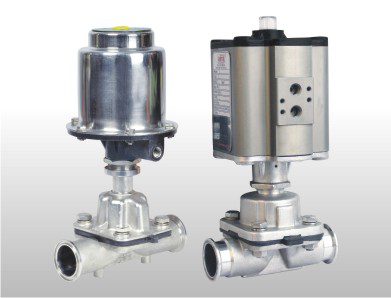Are you looking for a pneumatic control valve but need help determining which one is right for your application? This blog post will guide you through choosing the suitable pneumatic control valve so that you can make an informed decision.
We’ll cover the following topics:
- What are pneumatic control valves?
- How do pneumatic control valves work?
- What are the different types of pneumatic control valves?
- How to choose the suitable pneumatic control valve for your application
By the end of this blog post, you’ll know everything you need about pneumatic control valves and can confidently select the right one for your needs. So let’s get started!
Introduction
Pneumatic control valves are an essential part of any pneumatic system. They regulate the flow of compressed air to control the operation of pneumatic actuators. A wide variety of pneumatic control valves are available on the market, so choosing the right one for your specific application is essential.
There are three main factors to consider when choosing a pneumatic control valve:
1. The type of actuator that will be used with the valve.
2. The operating pressure of the system.
3. The flow rate required by the system.
Once you have considered these factors, you can narrow your options and choose the best pneumatic control valve for your application.
What are pneumatic control valves?
Pneumatic control valves are devices that are used to regulate the flow of air in a pneumatic system. They are often used in applications where it is necessary to control air’s direction, pressure, or flow rate.
Pneumatic control valves can be classified according to their function. The most common type of valve is the directional control valve, which controls the direction of airflow in a system. Other valves include pressure relief valves, used to relieve pressure in a plan, and flow control valves, used to regulate the air flow rate in a system.
Pneumatic control valves are typically made from brass, stainless steel, or aluminum. They may also be made from plastics such as polyamide or polycarbonate. The material used for a particular application will depend on the operating conditions and requirements of the system.
How do pneumatic control valves work?
Pneumatic control valves are used to regulate the flow of air in a pneumatic system. The most common type of valve is the directional control valve, which controls the direction of airflow in a system. Other types of valves include pressure relief valves and flow control valves. Pneumatic control valves are typically made from metals or plastics, and the material used for a particular application will depend on the operating conditions and requirements of the system.
What are the different types of pneumatic control valves?
Pneumatic control valves are devices used to regulate air flow in a pneumatic system. The most common type of valve is the directional control valve, which controls the direction of air flow in a system. Other types of valves include pressure relief valves and flow control valves. Pneumatic control valves are typically made from metals or plastics, and the material used for a particular application will depend on the operating conditions and requirements of the system.
Different types of pneumatic control valves serve other purposes in a pneumatic system. Directional control valves, for example, are used to control the direction of air flow in a system. On the other hand, pressure relief valves are used to relieve pressure build-up in a system. Flow control valves are used to regulate the flow of air in a system.
How to choose the suitable pneumatic control valve for your application
When choosing a pneumatic control valve for an application, it is essential to consider the operating conditions and requirements of the system. The material used for the valve will also depend on the working conditions of the system. For example, a metal valve may be required if the system is exposed to high temperatures. A plastic valve may be sufficient if the system is not exposed to high temperatures. It is also essential to consider the flow rate of air in the system when choosing a valve. The flow rate will determine the required size and type of valve.
Conclusion
When choosing a pneumatic control valve, it is essential to consider the operating conditions and requirements of the system. The material used for the valve will depend on the working conditions of the system. For example, a metal valve may be required if the system is exposed to high temperatures. A plastic valve may be sufficient if the system is not exposed to high temperatures. It is also essential to consider the flow rate of air in the system when choosing a valve. The flow rate will determine the required size and type of valve.
Pneumatic control valves are an essential part of any pneumatic system, and choosing the right one is crucial to ensuring that the system operates correctly. By considering the factors mentioned above, you can be sure to select a pneumatic control valve that is best suited for your application.

